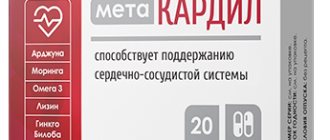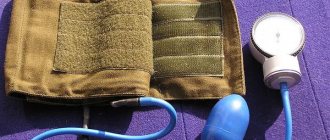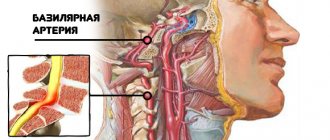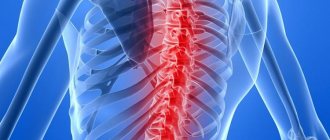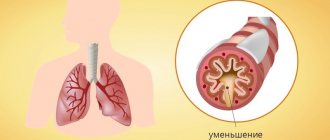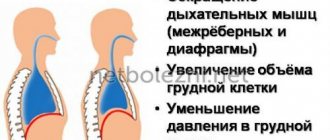What happens if air gets into a vein? This question often arises among those who have received an incorrect injection. And this is not without reason, because in many films and detective novels this method is often used by ruthless killers towards their victims. And watching how the negative character takes a large syringe, lifts the piston, pumps air into the vein and the hostage dies, the viewer’s memory involuntarily retains the information that such an injection is fatal.
What happens if air gets into a vein?
In medical practice, the process of air entering an artery, as well as the subsequent blocking of blood flow to the brain or heart, is called an air embolism. It is precisely this pathological condition that those who were accidentally injected with air into a vein are afraid of. It should be noted that this can indeed be a fatal situation, since a bubble that has entered a vein begins to gradually move along the artery, and then enters the system of the smallest vessels, which subsequently narrow to capillaries. In such a place, the air quickly stops the flow of blood entering any vital area of the body.
Causes of pathology
Air bubbles end up in the bloodstream for a variety of reasons. If the walls of blood vessels are damaged during inspiration, air is sucked through the injured vein.
The world-famous Russian scientist N.I. Pirogov established the following: death occurs during air embolism not from air emboli entering the vein, but from how quickly they arrive.
The pathology is provoked by the entry of an air bubble into the patient’s bloodstream. Through the right side of the heart, air is directed into the pulmonary artery, embolizing it. Due to mechanical obstacles, blood circulation stops. There is a sudden deterioration in the patient's condition.
During a blood transfusion, a characteristic hissing sound is heard when air enters the vein.
Immediately the patient exhibits nervous agitation, chest pain, and severe shortness of breath. The lips and face turn blue, and there is a sharp drop in blood pressure.
A quick injection of 3 ml of air into a vein is fatal. If small vessels are embolized, blood circulation is quickly restored due to collateral circulation.
Heart attack or stroke?
So what happens if air gets into a vein? According to doctors, the injured person can actually die from blocking the artery with air. In this case, we are talking about a cardiac embolism, which causes a rather life-threatening coronary air plug or so-called heart attack. Similarly, an embolism in the brain causes a stroke. However, it is worth noting that accidental entry of air into a vein does not cause death in 99% of cases. Why? You can find a comprehensive answer to this question below.
Symptoms of pathology
Signs of pathology due to air embolism:
- limbs weaken;
- the skin turns pale;
- dizzy;
- a moving tingling sensation is felt;
- rashes appear on the skin;
- joint pain is observed;
- blueness of the face and limbs;
- increased heart rate;
- speech disorder;
- increased blood pressure;
- loss of coherent speech;
- the appearance of a cough with bloody discharge.
Rules for administering an injection
What happens if air gets into a vein? This question arises in people not only because of films and detective novels, but also due to the fact that before an injection, nurses try to carefully squeeze out all the bubbles that are there from the syringe or dropper. Such caution among clinic workers involuntarily prompts the patient to think that if air is introduced into a vein, something very terrible will certainly happen. However, it is not. It’s just that similar procedures are required for any type of injection. Firstly, if all the bubbles are not removed, it will be quite problematic to administer the drug quickly and painlessly. Secondly, if air does get in, then in the first minutes the patient will actually feel “local” discomfort, calling the injection “sick”. But as practice shows, such unpleasant symptoms disappear after some time.
It is for these reasons that nurses try to give intravenous, subcutaneous or intramuscular injections according to all the rules. After all, few people will like a “sick” injection, after which it cramps an arm, leg or other parts of the body.
Composition and release form of the drug
Methadone, which is produced industrially at pharmacological enterprises, is purer and safer in terms of additional impurities. The drug is produced in tablet and powder form, as syrup and liquid for injection. The form only affects the method of use, but the active compound is always methadone hydrochloride.
A drug produced by a homemade method carries a greater danger than its pharmacy counterpart. The quality of the chemical is out of the question here, and the purity is highly questionable. Home-grown chemists use unknown reagents and dilute the drug with all sorts of additives to increase the volume and toxic effect. Sometimes even completely different compounds are sold under the guise of methadone. As a result, the home-made drug is tens of times more toxic than the factory-made substance and more often causes poisoning and overdose.
A cube of air into a vein: fatal or not?
If you notice that during the injection small air bubbles entered your bloodstream, then you should not immediately panic - there will definitely not be a fatal outcome in such a situation. Moreover, it makes sense to worry about this only if the intravenous injection was done incorrectly, since the air that gets into the muscle tissue or under the skin almost immediately dissolves in the cells, leaving no consequences, except perhaps short-term discomfort at the injection site.
As for intravenous injection, it all depends on the size of the bubble itself. If you let air into a vein just a little, it will immediately dissolve in the cells of the body, as is the case with an intramuscular or subcutaneous injection. That is why the accidental entry of small bubbles into the body will not affect the patient’s health in any way.
Literature:
- Ovcharova, Larisa Germanovna. Causes and consequences of bad habits: textbook / L. G. Ovcharova, L. S. Khoroshilova, Z. A. Kurbatova; Ministry of Education and Science of the Russian Federation, State. higher educational institution prof. education "Kemerovo State. univ." - Kemerovo: Kuzbassvuzizdat, 2006. - 115 p. : table; 20 cm; ISBN 5-8353-0185-5
- Drugs: properties, action, pharmacokinetics, metabolism: textbook / N. V. Veselovskaya [etc.]. — 3rd ed., revised, corrected. and additional - Moscow: Narkonet, 2008. - 262 p. : ill., table; 21 cm; ISBN 978-5-94497-029-9 (translated)
- Sore spot. Vienna. - Nizhny Novgorod: Newspaper world, 2021. - 95 p.; cm.; ISBN 978-5-4423-0242-4
What dose of air during injection is life-threatening?
As mentioned above, during a regular injection, only a minimum of air bubbles can accidentally enter the body, which will not in any way affect the person’s well-being. As for the possible lethal outcome, you have to try very hard for this. After all, according to experts, an air embolism will only occur if at least 200 ml of bubbles are injected into a vein. Only in this case they will not be able to resolve properly, which may well cause a stroke or heart attack.
Types of disease
Air embolism is divided into types:
- Obstetric embolism. Occurs due to incorrect management of obstetric care (uterine perforation, cervical rupture, vaginal rupture).
- Traumatic embolism. Develops in an operating or traumatic wound located above the level of the right atrium.
- Air embolism due to blood transfusions or therapeutic injections.
- Gas embolism occurring due to decompression when pressure increases.
Where is it especially dangerous to inject air?
Just above, we told you that the entry of air into the body during an intramuscular or subcutaneous injection does not threaten human life. Moreover, if a syringe with air was inserted into a vein, then this is also not fatal. And this has nothing to do with the number of bubbles. After all, death will not occur due to accidental entry of air into any of the small veins. In this regard, it is advisable for best-selling authors to write about the ruthless killing of victims using large syringes and injections into the main artery. After all, this is the only way the patient may soon have a stroke or heart attack.
What traces remain?
Returning to detective novels, it should be noted that quite often the presented method of murder is chosen based on the fact that in the future forensic experts will not be able to identify the true cause of a person’s death. But this is the same myth as death from one small “air” injection. The fact is that any specialist is able to almost immediately identify a recent injection, especially if it was done only with air. After all, after a person’s death, the injection site becomes very dark, and a light halo appears around it. As for the usual incorrect injection, in this case patients may subsequently experience minor bruises, as well as bumps or pustules. As a rule, hematomas at the injection site resolve quite quickly on their own. But if for some reason this does not happen, and the person begins to feel pain, his temperature rises, etc., then he should immediately consult a doctor, since it is likely that a serious infection has entered the wound.
Diagnosis of the disease
Diagnosis of the disease is carried out by examining the patient. If the patient has not lost consciousness, signs of air embolism can be observed:
- labored breathing;
- pain in the heart;
- dry cough.
Often these symptoms are followed by loss of consciousness.
In an unconscious state, the diagnosis of air embolism is confirmed by the following symptoms:
Diagnosis uses a stethoscope, ECG, ultrasound, and magnetic resonance imaging. Central venous pressure must be measured.
To diagnose sudden death, the following is done: the heart is placed under water and the right side is punctured. If air bubbles come out of the heart cavity, then the cause of death is an air embolism.
How is air removed correctly?
The rules for administering an injection are the same for everyone. That is why absolutely every medical worker is obliged to remove air from the medical device before injection. Let’s look at how exactly this is done a little further.
- From a syringe (for intramuscular, intravenous or subcutaneous injection). After drawing the medicine, the syringe is raised vertically with the needle up, and then the nurse makes light clicks on its body, thereby knocking all the bubbles together (into one air pocket). Then, by gently pressing the piston, the air is squeezed out. In this case, you should definitely release some of the drug, along with which all the remaining bubbles will go away.
- From IVs. Before inserting the system into the patient, medical staff perform all the same actions as with a syringe before an injection. By the way, if the liquid in the dropper runs out before the nurse removes the needle from the patient’s vein, then the air will not enter the human body in any case, since there is simply not enough pressure in the system for this.
- From complex medical devices. In such devices, where a sufficient amount of air can accumulate to cause death, there are special filters that automatically remove absolutely all existing bubbles.
In what other cases can an air embolism occur?
Quite often, divers encounter such a pathological condition that threatens human life. This happens in situations where a professional diver runs out of air at great depths and tries to quickly surface to the surface, while holding his breath. In this case, the air in the lungs begins to expand due to a decrease in pressure. As a result of this phenomenon, a rapid and rather strong filling of the internal respiratory organs with bubbles occurs, which can ultimately lead to the instant rupture of small sacs called alveoli. After this, air gradually enters all blood vessels, which ultimately leads to an air embolism, that is, a stroke or heart attack.
Why does pathology develop?
The causes of air embolism are:
- Chest injuries. Air bubbles rush along the pressure gradient into the vessel. The blood flow is blocked. The development of an air embolism is dangerous due to bleeding from damaged veins of the chest: the pressure decreases during inspiration, which leads to air being sucked in.
- Blood transfusion. The air bubble, passing through the right side of the heart, embolizes the pulmonary artery.
- Incorrect intravenous injection technique. Air bubbles along with the drug are introduced into the blood.
- Surgical injuries to the chest and head.
- Improper obstetric care, abortion. Venous ruptures of the placenta.
- Gas embolism in divers. In the case of incomplete exhalation of air when rising from depth, the air in the lungs expands. The lungs become inflated and gas bubbles remain in the bloodstream.
- When gas emboli enter the arteries of the brain, blood circulation is blocked, which leads to unconsciousness.
How to avoid?
What can you do to protect yourself from such deadly accidents? In a situation with divers, all rules for rising to the surface of the water should be followed. As for medicine, it is necessary to remove all air bubbles from syringes, droppers and other devices in advance.
When the medicine is drawn into the syringe, a certain amount of air enters it, which is then necessarily released. Among the patients there are many suspicious people who are very concerned about how experienced and conscientious the nurse is when giving an injection or placing an IV. It is believed that if air gets into the vein, death will occur. How is it really? Does such a danger exist?
Blockage of a blood vessel by an air bubble is called an air embolism. The possibility of such a phenomenon has long been considered in medicine, and it is indeed life-threatening, especially if such a plug is in a large artery. At the same time, according to doctors, the risk of death when air bubbles enter the blood is very small. In order for the vessel to become clogged and serious consequences to develop, at least 20 cubic meters must be injected. cm of air, and it should immediately enter the large arteries.
If medical assistance for the development of embolism is provided on time, the prognosis is favorable. The fact is that air pockets dissolve easily. Complications can most often be avoided. In rare cases, residual effects are observed, for example, paresis, if the cerebral vessels were blocked.
Death is rare if the body’s compensatory capabilities are small and help was not provided in a timely manner.
Adviсe
To avoid unpleasant consequences when administering drugs intravenously, it is best to adhere to some rules:
- Seek medical care from institutions with a good reputation.
- Avoid self-administration of medications, especially if such skills are lacking.
- Do not give injections or give IVs to people who do not have professional training.
- When forced to carry out procedures at home, carefully remove air from the dropper or syringe.
Advantages
The undoubted advantage of intravenous jet injections is the strength and speed of action of the drugs. The drug is not absorbed in the intestines, muscle tissue or subcutaneous fat - it directly enters the blood, from which it is further distributed to organs and tissues.
Therefore, intravenous jet injections are the only way out in severe, emergency conditions, when you need to achieve an effect immediately, here and now. Unlike intramuscular and subcutaneous injections, intravenous jet injections are more manageable. At the slightest change in the patient’s well-being, they can be stopped immediately.
Sometimes it is necessary to administer the drug very slowly at a given volumetric flow rate. For this purpose, special infusion pumps are used.
What is the difference between gas embolism in divers?
For divers, the main role is played by nitrogen, which is constantly present in the blood. The profession involves maintaining the relationship between ambient pressure (increases significantly at depth) and the state of the dissolved gas mixture. When lowering, the amount of nitrogen in the blood increases 4 times. If the rise is slow, microbubbles are transferred to the lungs and exhaled into the machine. With accelerated ascent, the volume of nitrogen does not have time to decrease, it “boils”.
Embolism in divers
The bubbles form emboli to which platelets attach. Gas embolism causes death from severe damage to the vascular system.
